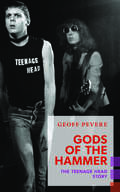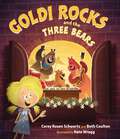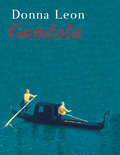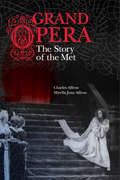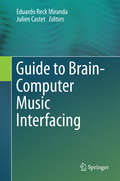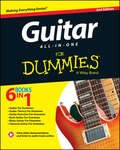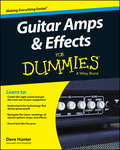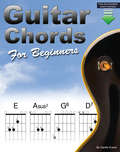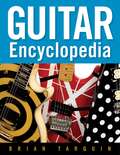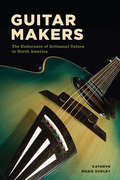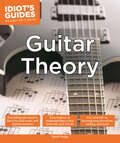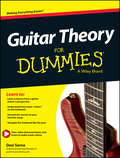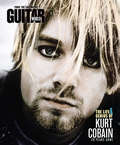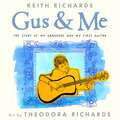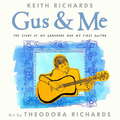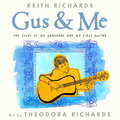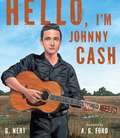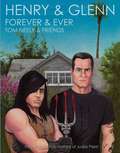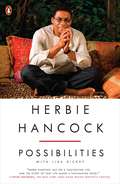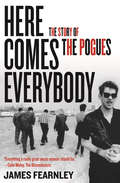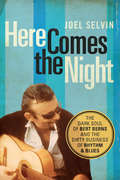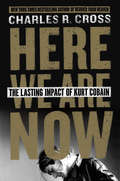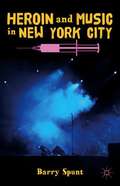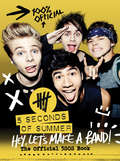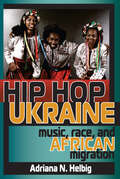- Table View
- List View
Gods of the Hammer: The Teenage Head Story (Exploded Views)
by Geoff Pevere'Teenage Head changed the face of music in this country. I would not be who I am today without their first record ... In 1979 they were the only band that mattered.' - Hugh Dillon In the late 1970s and early 1980s, no Canadian band rocked harder, louder or to more hardcore fans than Hamilton, Ontario's own Teenage Head. Although usually lumped in the dubiously inevitable 'punk rock' category of the day, this high--energy quartet --consisting of four guys who'd known each other since high school --were really only punk by association. In essence they were a full--on, balls--to--the--wall, three--chord, kick--out--the--jams band that obliterated categories and labels with the sheer force of their sonic assault, and everywhere they played they converted the merely curious to the insanely devoted. And they almost became world famous. Almost. This is their story, told in full and for the first time, and by those who lived to tell the tale. Praise for Gods of the Hammer: 'A riot of a good read on Teenage Head ... the writing is fast-paced and lively, told from the laudatory perspective of a frustrated fan trying to explain why such a great band never got its due.' - The Hamilton Spectator 'I loved it! Wanted it to last forever! Geoff Pevere has done an ace portrait of all that is great and dirty in rock and roll.' - Bruce McDonald 'Pevere's is an on-the-ground fan's account of how the band enamoured a country and how if just that one last, special piece fell into place -- if they were managed better, if an American record deal came sooner, if guitarist Gord Lewis hadn't been laid up for half a year at their very peak by a back-breaking car accident -- songs like "Picture My Face" and "Let's Shake" would be played before face-offs and stocked in jukeboxes from St. John's to San Francisco. The Head were always just a centimetre away from super-stardom. To a generation of hip music fans, they're as classic as The Cars, but instead of ubiquity, their story is a distinctly Canadian Almost Famous.' - Chart Attack Praise for Geoff Pevere: 'After almost 30 years of writing about the movies, Geoff Pevere's anti-establishment views are just as strong as ever, but now he wears them as comfortably as an old leather jacket. He has always been more interested in broadening people's interests than in trying to narrow them. In an age with almost unlimited access to film, just one stream in an onrushing tide of media, this is daring. For the boy who once had to wait months to see Citizen Kane, however, it's simply a gesture of generosity.' -- Toronto Screen Shot
Goldi Rocks & the Three Bears
by Corey Rosen Schwartz Beth CoultonA rockin' twist on Goldilocks and the Three Bears that shows how being yourself can get you out of a tight spot.Papa Bear, Mama Bear, and Baby Bear know how to rock! But they need a new singer, so they audition everyone—the Three Pigs, Little Red Riding Hood, and more. To their dismay, no one seems just right. Could the perfect lead singer be the mysterious girl sleeping on Baby Bear&’s keyboard?This mash up of Goldilocks and the Three Bears and The Voice is a surefire storytime hit. From the author of The Three Ninja Pigs.
Gondola (Books That Changed the World)
by Donna LeonThe international bestselling author delivers “a delightful look at the gondola as cultural icon, marvel of construction and object of romance and mystery” (Judith Malafronte, Opera News).Of all the trademarks of Venice—and there are many, from the gilded Basilica of San Marco to the melancholy Bridge of Sighs—none is more ubiquitous than the gondola. In Gondola, the acclaimed “American with the Venetian heart,” tells the fascinating story of this famous boat, complete with gorgeous full-color illustrations (The Washington Post).First used in medieval Venice as a deftly maneuverable getaway boat, the gondola evolved over the centuries into a floating pleasure palace, bedecked in silk, that facilitated the romantic escapades of the Venetian elite. Sumptuary laws turned it black—a gleaming, elegant hue for a boat manned by robust gondolieri in their iconic black-and-white-striped shirts and straw hats.Each boat is carefully fashioned in a maestro’s workshop—though Leon also recounts a tale of an American friend who attempted to make a gondola all on his own. Once its arched prow pushes off from the dock, the single Venetian at its oar just might break out in a barcarole, the popular songs sung by gondolieri. Please note this ebook edition does not include audio recordings.
Grand Opera
by Charles Affron Mirella Jona AffronThe Metropolitan has stood among the grandest of opera companies since its birth in 1883. Tracing the offstage/onstage workings of this famed New York institution, Charles Affron and Mirella Jona Affron tell how the Met became and remains a powerful actor on the global cultural scene. In this first new history of the company in thirty years, each of the chronologically sequenced chapters surveys a composer or a slice of the repertoire and brings to life dominant personalities and memorable performances of the time. From the opening night Faust to the recent controversial production of Wagner's "Ring," Grand Opera is a remarkable account of management and audience response to the push and pull of tradition and reinvention. Spanning the decades between the Gilded Age and the age of new media, this story of the Met concludes by tipping its hat to the hugely successful "Live in HD" simulcasts and other twenty-first-century innovations. Grand Opera's appeal extends far beyond the large circle of opera enthusiasts. Drawing on unpublished documents from the Metropolitan Opera Archives, reviews, recordings, and much more, this richly detailed book looks at the Met in the broad context of national and international issues and events.
Guide to Brain-Computer Music Interfacing
by Eduardo Reck Miranda Julien CastetThis book presents a world-class collection of Brain-Computer Music Interfacing (BCMI) tools. The text focuses on how these tools enable the extraction of meaningful control information from brain signals, and discusses how to design effective generative music techniques that respond to this information. Features: reviews important techniques for hands-free interaction with computers, including event-related potentials with P300 waves; explores questions of semiotic brain-computer interfacing (BCI), and the use of machine learning to dig into relationships among music and emotions; offers tutorials on signal extraction, brain electric fields, passive BCI, and applications for genetic algorithms, along with historical surveys; describes how BCMI research advocates the importance of better scientific understanding of the brain for its potential impact on musical creativity; presents broad coverage of this emerging, interdisciplinary area, from hard-core EEG analysis to practical musical applications.
Guitar All-In-One For Dummies
by Hal Leonard Corporation Mark Phillips Jon Chappell Desi SernaMake your music come alive with this indispensable guitar guide There's no denying that guitar players have cachet. The guitar is an ever-present part of our collective musical heritage, and the sound can be sensual, aggressive, or a million things in between. Whether you're hoping to conquer Free Bird, Bourée, or Bolero Mallorquin, you need to learn to walk before you can run. Even once you can run, you need something to help you clear hurdles along the way. That's where Guitar All-In-One For Dummies, 2nd Edition, comes in. It's your complete compendium of guitar instruction, written in clear, concise For Dummies style. It covers everything from positioning and basic chords to guitar theory and playing styles, and even includes maintenance advice to keep your instrument sounding great. It's an amazing resource for newbies and veterans alike, and offers you the opportunity to stretch beyond your usual genre. Forge the sound of rock, blues, classical, and more Understand the music theory behind guitar mastery Express yourself through your own compositions Perform practice exercises for muscle memory and dexterity Guitar All-In-One For Dummies, 2nd Edition, includes access to audio tracks and instructional videos to guide you through the lessons and inspire you to play often, which is the number-one key to success. You get advice and instruction from some of the most respected guitar teachers in the business, plus online resources, for less than the cost of a single lesson. Guitar All-In-One For Dummies, 2nd Edition, is the key to bringing your music to life.
Guitar Amps and Effects For Dummies
by Dave HunterLearn the secrets to achieving your ultimate sound Whether amateur or pro, guitarists live for the ultimate sound. Guitar Amps & Effects For Dummies provides the information and instruction you need to discover that sound and make it your own! Written in the characteristically easy-to-read Dummies style, this book is ideal for beginners and experienced musicians alike, and can help all players expand their skill set with effects. Guitarists tend to be gearheads when it comes to sound, and this book provides guidance on topics ranging from the guitar itself to amps, pedals, and other sound technology. Amps and effects are the unsung heroes of guitar music. While most people recognize the more psychedelic effects, many don't realize that effects are often responsible for the unique quality of tone that can become a musician's trademark. Certain effects work on the volume or signal level, others work on the environment, and still others work on the bass and treble content. Guitar Amps & Effects For Dummies covers them all, and shows how effects can not only add something extra, but also "fix" problematic areas. Topics include: Gain-based effects, like distortion, compression, volume pedals, and gates Tone-based effects, including graphic and parametric EQ, and the wah-wah pedal Modulation effects, like the flanger, phase shifter, and tremolo Ambience effects, including reverb and delay The journey to incredible guitar music never ends. No matter how experienced you are with a guitar, there is always room for improvement to your tone and sound. Whether you're looking for the sound of angels or thunder, Guitar Amps & Effects For Dummies will help you achieve the music you hear in your dreams.
Guitar Chords for Beginners: A Beginners Guitar Chord Book with Open Chords and More
by Gareth Evans“It's a very comprehensive book containing chords from the beginning stages and beyond. Everything is very well explained with no stone left unturned. I'd highly recommend it to anyone who's starting out with the guitar.” Nigel Elliott, Guitarist & Tutor (N.Ireland)Guitar Chords for Beginners contains 65 different chords arranged in easy fingerings.- TechniqueFretting hand technique for playing guitar chords is looked at in detail with diagrams. Where necessary, some chords are taught incrementally because taking on only the harder aspects of a chord’s fingering first means our hand is freer to adjust. Other chords are shown with different fingerings for you to choose which you prefer. Playing guitar chords may seem like a contortion for the hands of the beginner so there is some basic guidance on stretching to keep the hands flexible.- Audio and MoreEach guitar chord has a downloadable audio example enabling you to hear if you have played it right, or to hear what you need to work towards. There is an introduction to moveable power chords and barre chords, in which barre chords are shown as easier cut-down versions of full barre chord shapes. At the back of Guitar Chords for Beginners there is a list of suggested songs that contain chords from within the book.Grab a copy today!"Looks fab. I particularly like the different ways of playing the A chord. The physical warm-up exercises for flexibility are also good. It is good that movable major and minor barre chords are shown as partial versions to make them initially easier, and beginners might find extra interest where near the back of the book easy open versions of other more exotic chords are shown, such as Dm(maj7), the "James Bond" chord." Campbell Murray, RGT & MU Registered Tutor (Scotland)
Guitar Encyclopedia
by Brian TarquinFrom renowned guitarist and multi-Emmy-award winning composer, Brian Tarquin, comes a display-quality, full-color reference guide to guitars. The Guitar Encyclopedia begins with the history of guitars spanning back to the birth of Epiphone by a Greek immigrant and the great inventions of Les Paul, to the boom of the Rock-'n-Roll-shredder days with Ibanez guitars and the futuristic designs of the Gibson Moderne and the Randy Rhodes Polka Dot Flying V. The book also contains interviews from guitar designers such as Fender and Eastwood, as well as boutique companies such as Gander and Specimen.A far cry from other dry schematic encyclopedias, this book details the connections between different guitars and the monumental recordings that they produced. With introductions by Gary Hoey, Chris Poland (Megadeth), and Eric Shoaf (Vintage Guitar magazine), this book provides a rich and unique account of iconic guitars throughout history.
Guitar Makers: The Endurance of Artisanal Values in North America
by Kathryn Marie DudleyIt whispers, it sings, it rocks, and it howls. It expresses the voice of the folk—the open road, freedom, protest and rebellion, youth and love. It is the acoustic guitar. And over the last five decades it has become a quintessential American icon. Because this musical instrument is significant to so many—in ways that are emotional, cultural, and economic—guitar making has experienced a renaissance in North America, both as a popular hobby and, for some, a way of life. In Guitar Makers, Kathryn Marie Dudley introduces us to builders of artisanal guitars, their place in the art world, and the specialized knowledge they’ve developed. Drawing on in-depth interviews with members of the lutherie community, she finds that guitar making is a social movement with political implications. Guitars are not simply made—they are born. Artisans listen to their wood, respond to its liveliness, and strive to endow each instrument with an unforgettable tone. Although professional luthiers work within a market society, Dudley observes that their overriding sentiment is passion and love of the craft. Guitar makers are not aiming for quick turnover or the low-cost reproduction of commodities but the creation of singular instruments with unique qualities, and face-to-face transactions between makers, buyers, and dealers are commonplace. In an era when technological change has pushed skilled artisanship to the margins of the global economy, and in the midst of a capitalist system that places a premium on ever faster and more efficient modes of commerce, Dudley shows us how artisanal guitar makers have carved out a unique world that operates on alternative, more humane, and ecologically sustainable terms.
Guitar Theory (Idiot's Guides)
by David HodgeMusic theory is often considered to be one of the most difficult subjects to learn. Idiot's Guides: Guitar Theory breaks down music theory for guitar and other fretboard instruments in very simple and easy-to-understand lessons. Content includes everything a budding musician needs to know about notes, guitar tablature, rhythm, chords and scales, and more.
Guitar Theory For Dummies
by Desi SernaSerious about jamming, understanding, and creating guitar-driven music? Easy.With an approachable and engaging style, Guitar Theory For Dummies goes beyond guitar basics, presenting the guidance intermediate to advanced players need to improve their improvisational and compositional skills. Plus, with access to audio tracks and video instruction online you can master the concepts and techniques covered in the book.Key content coverage includes: pentatonic and major scale patterns; the CAGED chord system, chord progressions, and playing by numbers; roots, keys, and applying scales, plus modes and modal scales; intervals and chord extensions; popular song references and theory applications that help you understand how to play popular music and contemporary guitar styles, and create music of your own.This title also features companion audio tracks and video content hosted online at Dummies.comThe expert instruction and easy-to-digest information provides comprehensive guidance on how to apply music theory concepts to fretted instrumentsIf you already have a handle on the basics and want to know more about the building blocks and theory behind guitar music, Guitar Theory For Dummies has you covered.
Guitar World The Life & Genius of Kurt Cobain
by Editors of Guitar WorldKurt Cobain--rock visionary, godfather of grunge, voice of the disaffected--was also a powerful and influential guitarist. From the editors of Guitar World, the #1 guitar magazine, The Life and Genius of Kurt Cobain examines his impact on American music--and why a man who had everything came to the terrible conclusion that he had nothing. Collected here are the stories and interviews exclusively published by Guitar World, chronicling Cobain's dramatic ascent on the Seattle music scene, the making of Nirvana's albums, Cobain's personal demons, and his far-reaching legacy.
Gus & Me
by Keith Richards Theodora RichardsLong before there was a band, there was a boy: a young Keith Richards, who was introduced to the joy of music through his beloved granddad, Theodore Augustus Dupree, affectionately known as "Gus," who was in a jazz big band and is the namesake of Keith's daughter, Theodora Dupree Richards. Gus & Me offers a rare and intimate look into the childhood of the legendary Keith Richards through this poignant and inspiring story that is lovingly illustrated with Theodora Richards's exquisite pen-and-ink collages. This unique autobiographical picture book honors the special bond between a grandfather and grandson and celebrates the artistic talents of the Richards family through the generations. It also includes selected photographs from the Richards family collection and Read-Aloud functionality where available.
Gus and Me: The Story Of My Granddad And My First Guitar
by Keith RichardsKeith's grandfather, Theodore Augustus Dupree lived near Seven Sisters Road, in a house filled with instruments and cakes. A nostalgic look back at happy childhood days as the Rolling Stone star remembers his grandfather - a former big band player who encouraged his grandson to take up the guitar, in this charming picture book whimsically illustrated by Keith Richards' daughter.
Gus and Me: The Story Of My Granddad And My First Guitar
by Keith RichardsKeith's grandfather, Theodore Augustus Dupree lived near Seven Sisters Road, in a house filled with instruments and cakes. A nostalgic look back at happy childhood days as the Rolling Stone star remembers his grandfather - a former big band player who encouraged his grandson to take up the guitar, in this charming picture book whimsically illustrated by Keith Richards' daughter.
Hello, I'm Johnny Cash
by G. Neri A. G. FordThere’s never been anyone like music legend Johnny Cash. His deep voice is instantly recognizable, and his heartfelt songs resonate with listeners of all ages and backgrounds. G. Neri captures Johnny’s story in beautiful free verse, portraying an ordinary boy with an extraordinary talent who grew up in extreme poverty, faced incredible challenges, and ultimately found his calling by always being true to the gift of his voice. A. G. Ford’s luscious paintings of the dramatic southern landscape of Johnny Cash’s childhood illuminate this portrait of a legend, taking us from his humble beginnings to his enormous success on the world stage.
Henry & Glenn Forever & Ever
by Tom NeelyTwo men.Two myths.One legend.The greatest love story every told has finally been released in graphic novel form. This epic tome features twenty short stories about the domestic life of "Henry" and "Glenn" and sometimes their neighbors "Daryl" and "John." Glenn deals with issues with his mother while Henry, "a loud guy with a good work ethic," shows his darker side and indifference to a fan as he drinks black coffee and bonds with Glenn over their distaste for their own bands. These are two men who truly suffer best alone together.Among other hijinks, Henry and Glenn go to therapy together, battle an evil cult in the forest, and profess their love for each other, all while dealing with jealousy and other normal relationship problems and trying to figure out if their soft-rocking neighbors are actually Dungeons and Dragons playing Satanists. The saga of The saga of Henry and Glenn is a true testament to the power of love to overcome even the biggest, manliest egos of our time.The book collects four serialized comics, adds 100 never-before published pages, including new stories, pin up art, and full color covers from the original series. <P><P> <i>Advisory: Bookshare has learned that this book offers only partial accessibility. We have kept it in the collection because it is useful for some of our members. Benetech is actively working on projects to improve accessibility issues such as these.</i>
Herbie Hancock: Possibilities
by Lisa Dickey Herbie HancockThe long-awaited memoir by one of the most influential and beloved musicians of our timeIn Herbie Hancock the legendary jazz musician and composer reflects on a life and a thriving career that has spanned seven decades. <P><P>A true innovator, Hancock has had an enormous influence on both acoustic and electric jazz, R&B and hip-hop, with his ongoing exploration of different musical genres, winning fourteen Grammy awards along the way.From his beginnings as a child prodigy to his work in Miles Davis's second great quintet; from his innovations as the leader of his own groundbreaking sextet to his collaborations with everyone from Wayne Shorter to Joni Mitchell and Stevie Wonder; Herbie Hancock reveals the method behind Hancock's undeniable musical genius.Hancock shares his musical influences, colorful behind-the-scenes stories, his long and happy marriage, and how Buddhism inspires him creatively and personally. Honest, enlightening, and as electrifyingly vital as the man who wrote it, Herbie Hancock promises to be an invaluable contribution to jazz literature and a must-read for fans and music lovers.
Here Comes Everybody: The Story of the Pogues
by James FearnleyThe Pogues injected the fury of punk into Irish folk music and gave the world the troubled, iconic, darkly romantic songwriter Shane MacGowan. Here Comes Everybody is a memoir written by founding member and accordion player James Fearnley, drawn from his personal experiences and the series of journals and correspondence he kept throughout the band's career. Fearnley describes the coalescence of a disparate collection of vagabonds living in the squats of London's Kings Cross, with, at its center, the charismatic MacGowan and his idea of turning Irish traditional music on its head. With beauty, lyricism, and great candor, Fearnley tells the story of how the band watched helplessly as their singer descended into a dark and isolated world of drugs and alcohol, and sets forth the increasingly desperate measures they were forced to take.
Here Comes the Night: The Dark Soul of Bert Berns and the Dirty Business of Rhythm and Blues
by Joel Selvin"I don't know where he's buried, but if I did I'd piss on his grave." -Jerry Wexler, best friend and mentorHere Comes the Night: Bert Berns and the Dirty Business of Rhythm and Blues is both a definitive account of the New York rhythm and blues world of the early '60s, and the harrowing, ultimately tragic story of songwriter and record producer Bert Berns, whose meteoric career was fueled by his pending doom. His heart damaged by rheumatic fever as a youth, doctors told Berns he would not live to see twenty-one. Although his name is little remembered today, Berns worked alongside all the greats of the era - Jerry Leiber and Mike Stoller, Ahmet Ertegun and Jerry Wexler, Burt Bacharach, Phil Spector, Gerry Goffin and Carole King, anyone who was anyone in New York rhythm and blues. In seven quick years, he went from nobody to the top of the pops - producer of monumental r&b classics, songwriter of "Twist and Shout," "My Girl Sloopy" and others.His fury to succeed led Berns to use his Mafia associations to muscle Atlantic Records out of a partnership and intimidate new talents like Neil Diamond and Van Morrison he signed to his record label, only to drop dead of a long expected fatal heart attack, just when he was seeing his grandest plans and life's ambitions frustrated and foiled.
Here We Are Now: The Lasting Impact of Kurt Cobain
by Charles R. CrossIn Here We Are Now: The Lasting Impact of Kurt Cobain, Charles R. Cross, author of the New York Times bestselling Cobain biography Heavier Than Heaven, examines the legacy of the Nirvana front man and takes on the question: why does Kurt Cobain still matter so much, 20 years after his death?Kurt Cobain is the icon born of the 90s, a man whose legacy continues to influence pop culture and music. Cross explores the impact Cobain has had on music, fashion, film, and culture, and attempts to explain his lasting and looming legacy.
Heroin and Music in New York City
by Barry SpuntUsing narrative accounts from a sample of 69 New York City-based musicians of various genres who are self-acknowledged heroin users, the book addresses the reasons why these musicians started using heroin and the impact heroin had on these musicians' playing, creativity, and careers.
Hey, Let's Make a Band!
by 5 Seconds of SummerHi everyone,This book is pretty much our official story so far. It really does seem only like last week we played our first gig at the Annandale Hotel in Sydney. Since then we've been given the opportunity to turn into the people and musicians we wanted to be.The people who gave us the opportunity were the fans. So this book is like a thank-you. We want everyone to know the story of how four western Sydney teenagers picked up their instruments and dreamed of being one of the biggest bands in the world. There are also some embarrassing photos of us derping around and some facts that some of us didn't even know. So we hope you enjoy it!Love, cal, luke, ash, and mike x
Hip Hop Ukraine: Music, Race, and African Migration (Ethnomusicology Multimedia)
by Adriana N. Helbig&“[A] magnificent study . . . adds to the burgeoning scholarship on global hip hop and furthers our knowledge of the African diaspora in Eastern Europe.&” —Anthropology of East Europe ReviewsFeatured in NPR&’s &“Read These 6 Books About Ukraine&” In Hip Hop Ukraine, we enter a world of urban music and dance competitions, hip hop parties, and recording studio culture to explore unique sites of interracial encounters among African students, African immigrants, and local populations in eastern Ukraine. Adriana N. Helbig combines ethnographic research with music, media, and policy analysis to examine how localized forms of hip hop create social and political spaces where an interracial youth culture can speak to issues of human rights and racial equality. She maps the complex trajectories of musical influence—African, Soviet, American—to show how hip hop has become a site of social protest in post-socialist society and a vehicle for social change.&“This is a unique and admirable book that traces a complex trail from hip hop created by African migrants in Ukraine through remote African-American influences to their origins in Uganda and back again.&” —Slavic Review&“Portrays the music as a forceful influence on worldwide social and cultural expression.&” —Slavonic and East European Review&“A well-conceived study of the role and significance of hip hop in Ukraine. It joins the ranks of other very timely chronicles on the impact of hip hop in various societies around the world.&” —Allison Blakely, Boston University
